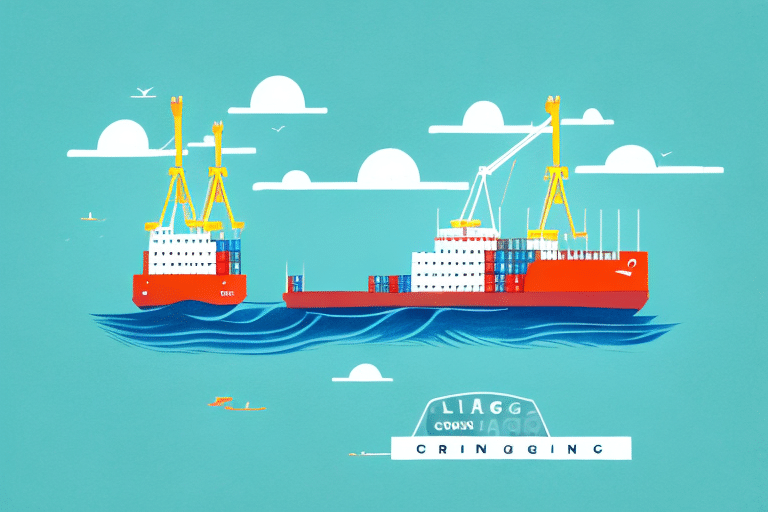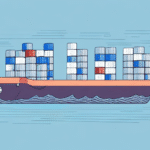Understanding CBM (Cubic Meter) Shipping
In today's globalized economy, efficient logistics are crucial for the smooth operation of businesses. CBM (Cubic Meter) Shipping has emerged as a popular method for transporting goods, particularly those that are bulky but lightweight. Unlike traditional shipping methods that calculate costs based on weight, CBM Shipping focuses on the volume of the goods, making it a cost-effective solution for many industries.
How CBM Shipping Works
CBM Shipping calculates the shipping cost based on the volume of the goods in cubic meters. To determine the CBM, you multiply the length, width, and height of the package in meters. For shipments with multiple packages, the total CBM is the sum of the individual volumes. This method is particularly advantageous for large items like furniture, electronics, and machinery, where the physical space occupied is a more significant factor than the weight.
- Volume Calculation: Length × Width × Height = CBM
- Cost Determination: Carrier rates based on cubic volume
- Optimized Space: Efficient use of container or truck space
Benefits of CBM Shipping
CBM Shipping offers several advantages over traditional weight-based shipping methods:
Cost-Effectiveness
Shipping costs based on volume can be more economical for bulky, lightweight items. By optimizing the use of space, businesses can reduce the number of shipments needed, leading to significant cost savings.
Environmental Impact
Efficient use of cargo space means fewer trips are required to transport the same volume of goods, resulting in lower carbon emissions and a smaller environmental footprint.
Flexibility
CBM Shipping accommodates a wide range of cargo sizes and types, including oversized and less-than-container loads, providing greater flexibility for shippers.
Cost-Effectiveness and Environmental Benefits
Using CBM Shipping can lead to substantial cost savings. According to the Global Logistics Performance Index, optimizing shipment volume can reduce transportation costs by up to 20% for suitable cargo. Additionally, by maximizing cargo space, businesses contribute to reducing the number of transport trips, thereby lowering greenhouse gas emissions.
Practical Guide to CBM Shipping
Calculating CBM
To calculate CBM:
- Measure the length, width, and height of the package in meters.
- Multiply these dimensions to get the volume in cubic meters (CBM).
- For multiple packages, add the CBMs together to get the total shipment volume.
Tips for Packing
Effective packing maximizes space utilization and minimizes damage:
- Use standardized packaging sizes to fit efficiently within the container.
- Secure fragile items with adequate padding like bubble wrap or foam.
- Pack items tightly to reduce movement during transit.
Choosing the Right Carrier
Select a carrier that offers competitive CBM rates and reliable service. Comparing different carriers can help identify the most cost-effective options for your specific shipping needs.
Role of Freight Forwarders
Freight forwarders act as intermediaries, handling documentation, customs clearance, and logistics management. Their expertise can streamline the shipping process, ensuring timely and efficient delivery of goods.
Risks and Challenges of CBM Shipping
While CBM Shipping offers numerous benefits, there are potential risks and challenges to consider:
Potential for Damage
Bulky items may be packed loosely, increasing the risk of damage during transit. Proper packing materials and techniques are essential to mitigate this risk.
Customs Clearance
Navigating international customs regulations can be complex. Inaccurate CBM calculations or improper documentation can lead to delays or additional costs.
Transit Delays
Longer shipping routes or reliance on multiple transport modes can result in transit delays. Working with reliable carriers and planning for contingencies can help manage this challenge.
Comparison with Other Shipping Methods
CBM Shipping is just one of several shipping options available to businesses. Here's how it compares to other methods:
- Air Freight: Fastest but most expensive. Suitable for high-value or urgent shipments.
- Road Transport: Flexible and cost-effective for short to medium distances but limited by container size and road regulations.
- Rail Transport: Ideal for large, heavy shipments over land with relatively low carbon emissions.
- Sea Freight: Most economical for large volumes but slower compared to air freight.
CBM Shipping offers a balanced approach, providing cost-effective solutions for bulky items while optimizing space utilization.
Emerging Trends in CBM Shipping
The logistics industry is continuously evolving, with several trends shaping the future of CBM Shipping:
Technological Advancements
Integration of digital tools for real-time tracking, automated booking systems, and enhanced supply chain visibility is revolutionizing CBM Shipping efficiency.
Sustainability Initiatives
Greater emphasis on reducing environmental impact is driving the adoption of greener shipping practices and the use of fuel-efficient vessels.
Customization and Flexibility
Shippers are increasingly seeking customized solutions to meet specific needs, leading to more flexible shipping options and tailored services.
Frequently Asked Questions about CBM Shipping
1. What are the CBM Shipping rates?
CBM Shipping rates vary based on the carrier, destination, and the volume of the shipment. It's best to consult with carriers directly for accurate pricing.
2. Is CBM Shipping suitable for small packages?
Yes, CBM Shipping can accommodate both small and large packages, making it a versatile option for various shipping needs.
3. Can I track my CBM shipment?
Most carriers offer real-time tracking services, allowing shippers to monitor their shipments throughout transit.
4. Is CBM Shipping only suitable for sea freight?
No, CBM Shipping can be used for air, land, and sea freight, providing flexibility across different transportation modes.
5. How long does CBM Shipping take to reach its destination?
Transit times depend on the origin and destination, carrier schedules, and chosen transportation mode. It's advisable to discuss timelines with your carrier.
Conclusion
CBM Shipping stands out as a cost-effective and flexible solution for transporting bulky, lightweight goods. By focusing on the volume of shipments, businesses can optimize space utilization, reduce costs, and contribute to environmental sustainability. Proper packing, accurate CBM calculations, and partnering with reliable freight forwarders are essential for maximizing the benefits of CBM Shipping. As the logistics industry continues to innovate, CBM Shipping is poised to become an even more integral part of global trade.






















